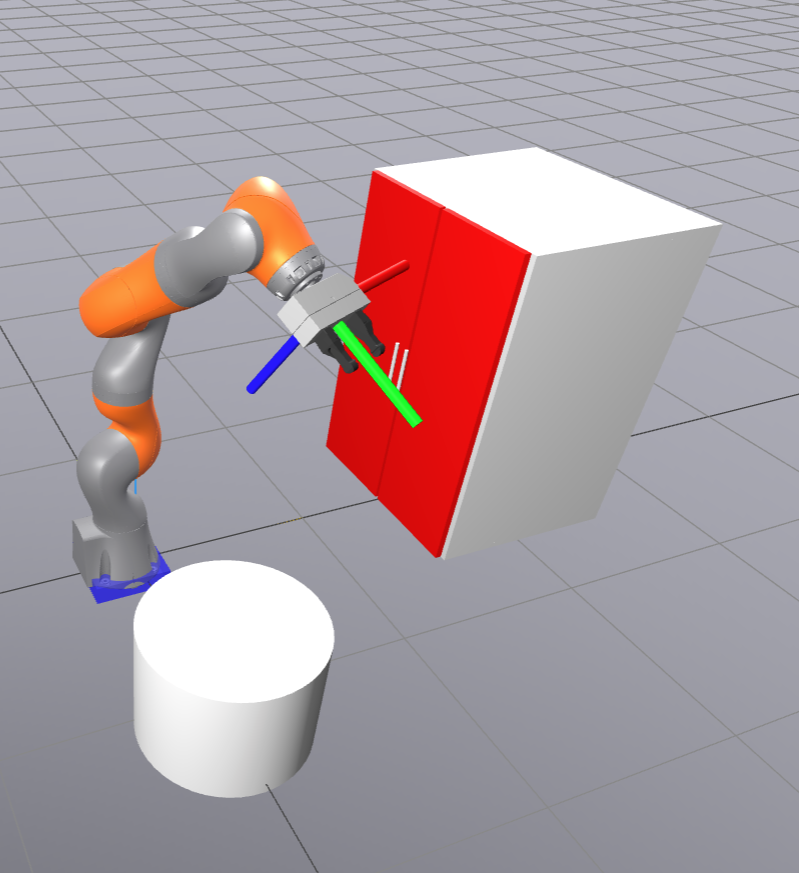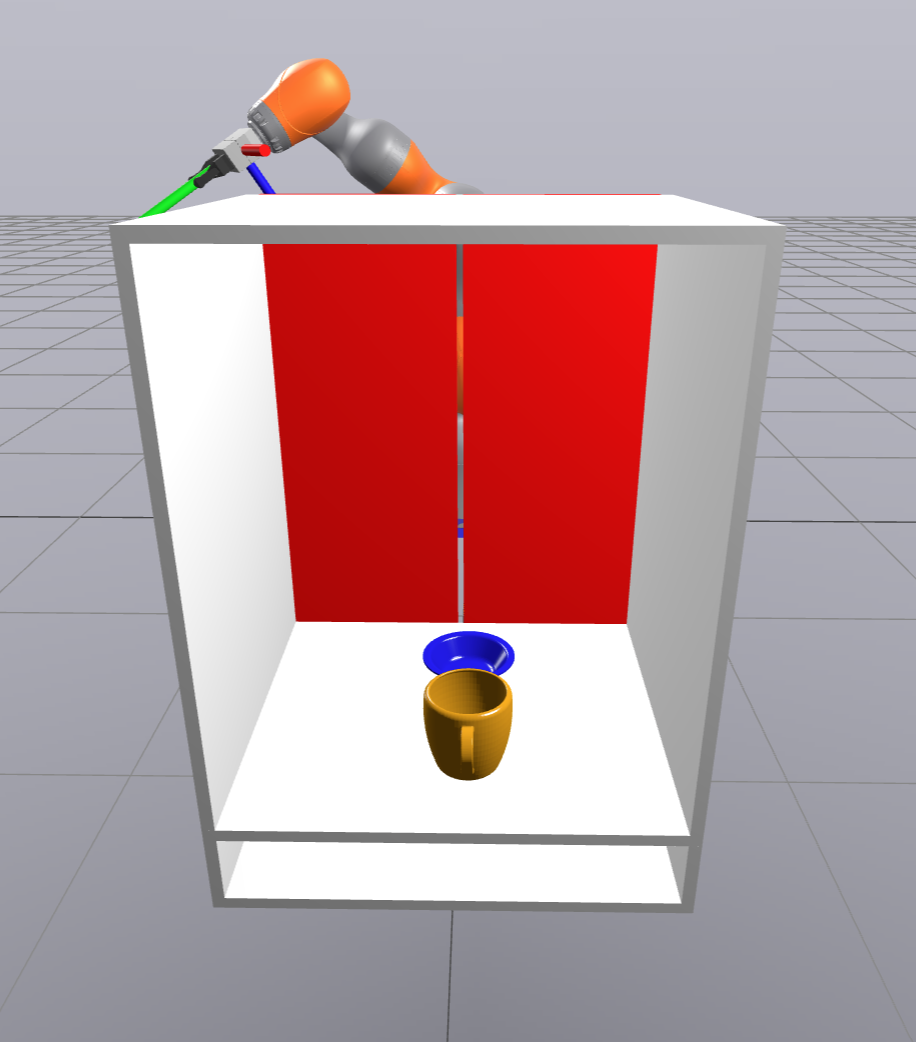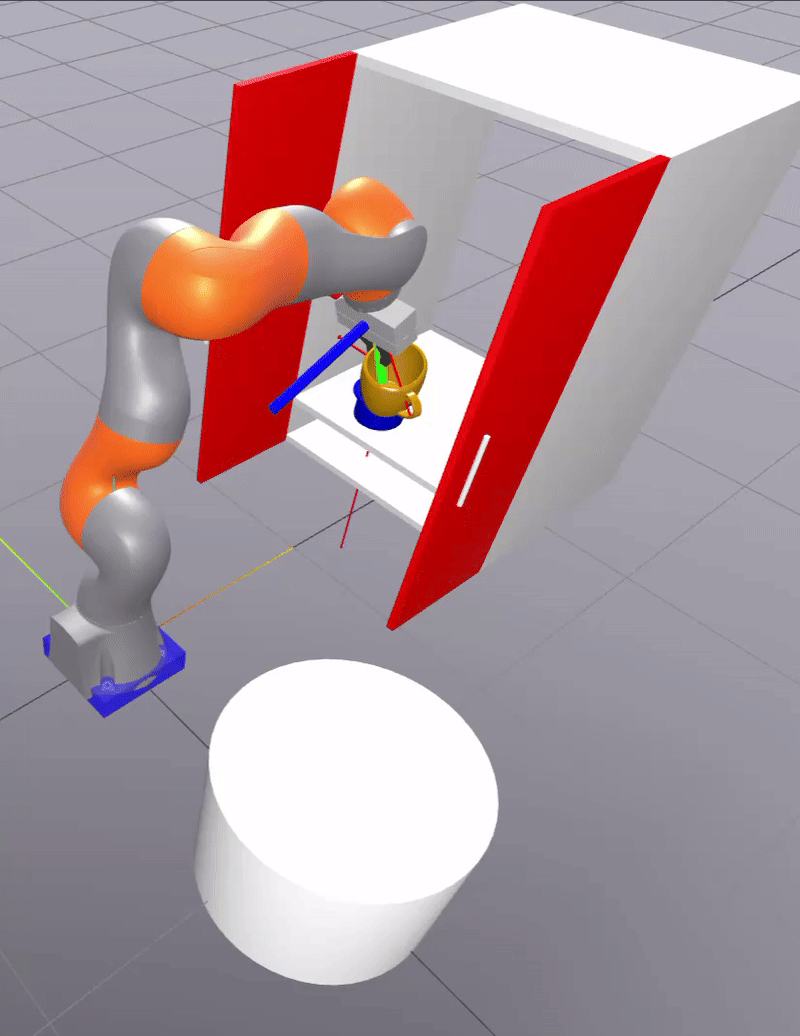Household Robot
Simulation of a household robot
MIT 6.4212 Robot Manipulation
Abstract - Through this work we explored the feasibility of an iiwa robot performing household pick and place tasks within a simulated environment. Tasks include opening cabinet doors, retrieving an obscured cup, and placing it on a table while en- suring collision-free motion. We use bi-RRT for pathfinding and refine trajectories with kinematic optimization. A state machine manages tasks dynamically, overcoming challenges like scene randomness, IK sensitivity, and collision checking. The model achieved a 70% success rate across trials, with failure modes including robot singularities and final cup pose misalignment. Future work aims to integrate vision-based grasping and explore alternative trajectory planning methods for randomized objects. The gripper object grasping pose was predefined to grab a cup and bowl object from within a cupboard. Key challenges include determining collision-free trajectory while adhering to joint singularities and hydroelectric contact.
For our robot environment, we used predefined grasp poses for the cup. The robot manipulator could grasp from 3 orientations at the lip and 1 at the handel as shown in the image below
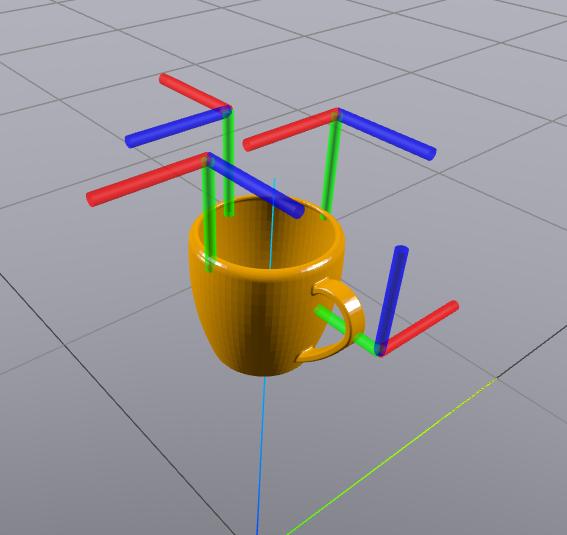
We defined a state machine to manage the robot’s actions. Our robot contained the following actions, Wait 1 Second, Open Right Door, Open Left Door, Push Door, Move Base, Remove Bowl, Pick Cup, Take Cup Out, Place Cup, Go Home, and End state. The full state machine is shown below
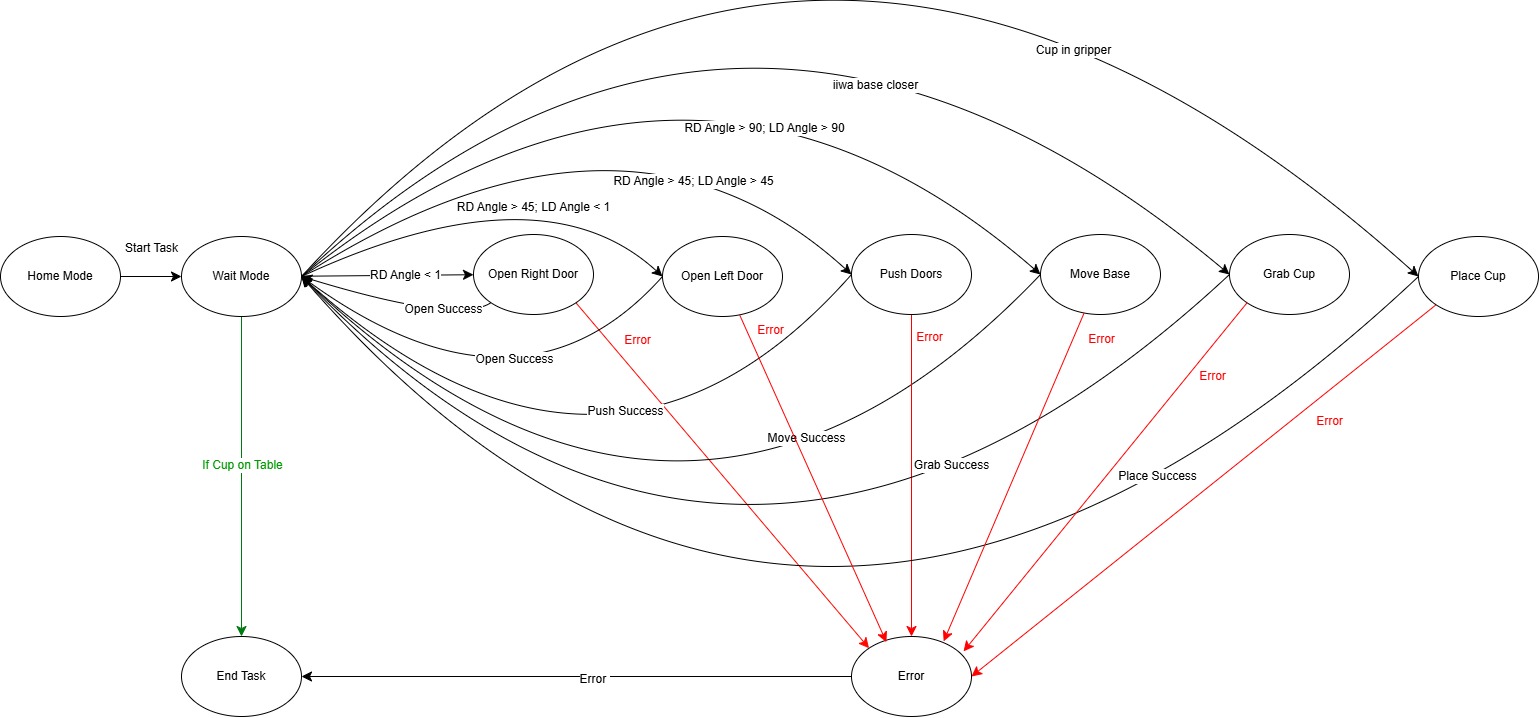
To determine a collision-free trajectory for our robot manipulator, we used bi-directional RRT pathfinding. The RRT algorithm was used to find an optimal path from the robot’s current position to the goal position. The path was then refined using a shortcutting method. The full pathfinding algorithm is shown below.
Algorithm: Bi-RRT Algorithm
Input: Initial state q_init, Goal state q_goal
Output: Path connecting q_init and q_goal
1. Initialize T_a ← {q_init}, T_b ← {q_goal}
2. While Valid Path Not Found:
a. q_rand ← SampleRandomNode()
b. q_near ← NearestNeighbor(T_a, q_rand)
c. ValidityChecker(q_rand)
d. [q_added, a] ← T_a.Extend(q_near, q_rand)
e. T_b.Extend(q_near, q_a, rand)
f. Swap T_a and T_b
g. If PathFound(T_start, T_goal): Break
3. Return Path connecting q_init and q_goal
